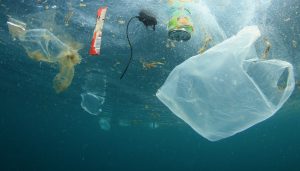Tiny pieces of plastic found in Arctic snow
The discovery suggests that microplastics are being carried around the planet in atmospheric winds, and that we’re breathing them in.
Microplastics, those pervasive relics of modern times, have invaded seemingly every part of the planet today, including the most remote reaches of the Arctic. Scientists have been puzzling over how this flood of pollution makes its way to such distant locations far from the urban centers where it’s generated. A new study finds a surprising route for the tiny particles—they’re ferried aloft to fall in the Arctic as snow.
“Substantial” amounts of plastic fragments and fibers are landing atop ice floes in the Fram Strait—an unpopulated expanse of ocean between Greenland and the Norwegian Arctic archipelago of Svalbard—reports the study, published today in Science Advances.
Scientists from Germany’s Alfred Wegener Institute for Polar and Marine Research and the Swiss Institute for Snow and Avalanche Research measured microplastics in snow samples from this remote location during research cruises from 2015-17, and found levels they conclude could only have fallen from the sky. The study raises concerns about how much microplastics contaminate the atmosphere, posing a potential health risk to people and animals that breathe them in.
“I think the exposure pathway for us, the main exposure pathway, may be the air that we breathe,” says Melanie Bergmann, a marine ecologist with the Alfred Wegener Institute and lead author on the new paper.
Although it’s remote, the Arctic is far from pristine, with much of the world’s pollution eventually making its way there. Bergmann and her colleagues had been studying plastics on the Arctic sea floor since 2002. Over the past decade or so, they noticed huge increases in the amount they were seeing, including a tenfold rise at one station.
So they started to look for microplastics in the Arctic water column. Copious amounts turned up everywhere they looked. In deep sea sediments, they found about 6,000 particles in every 2.2 pounds of mud. Sea ice was even more laden—as much as 12,000 particles per 34 ounces of melted ice, according to Bergmann. And other researchers found that Arctic surface waters had the highest microplastics concentrations of all the world’s oceans.



